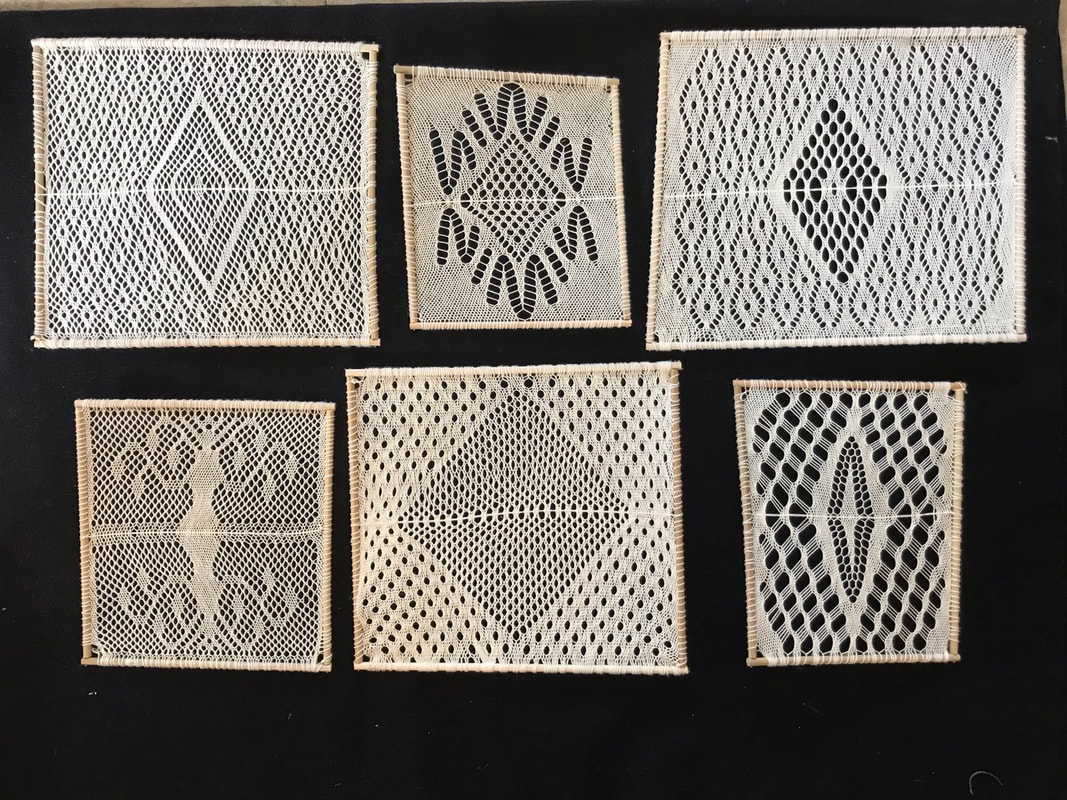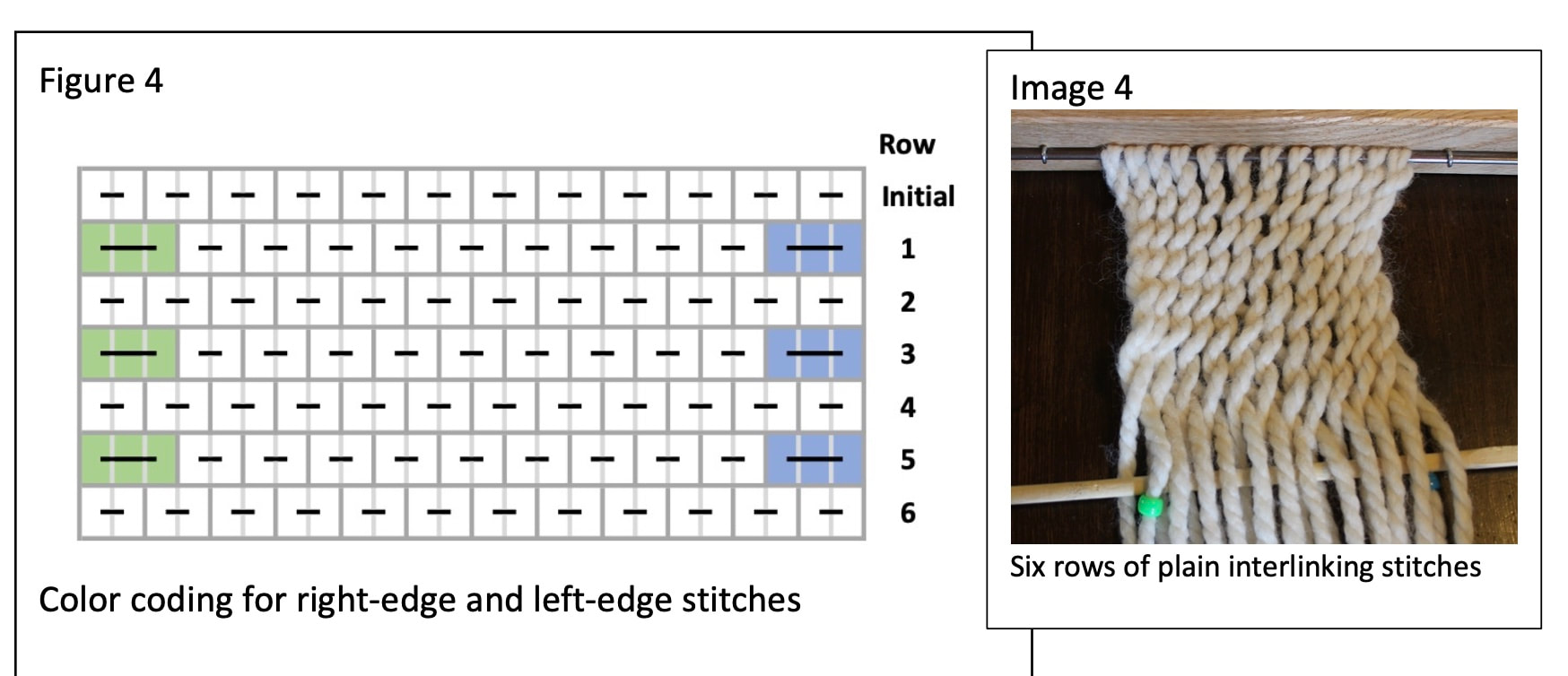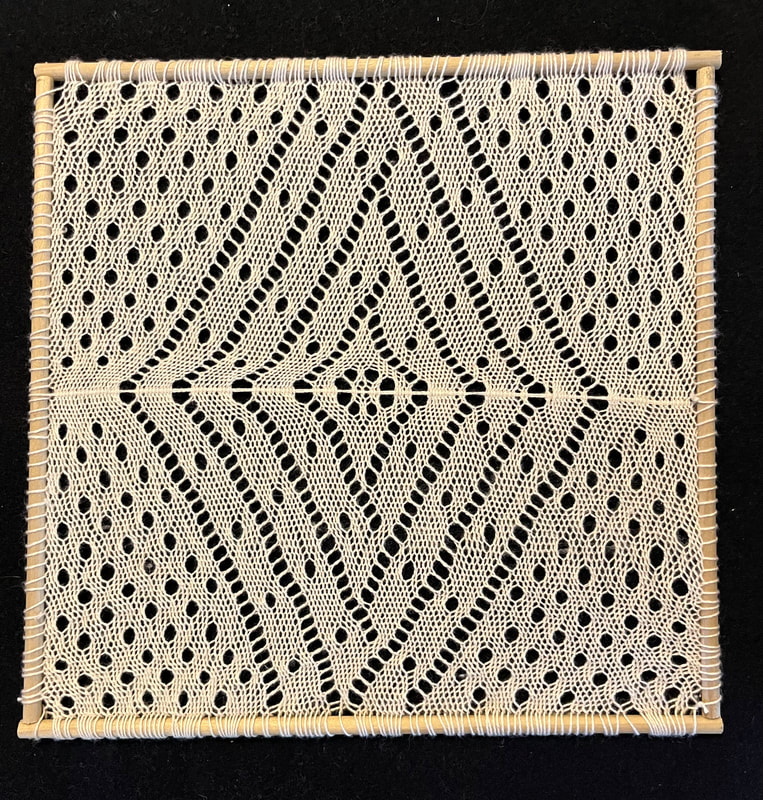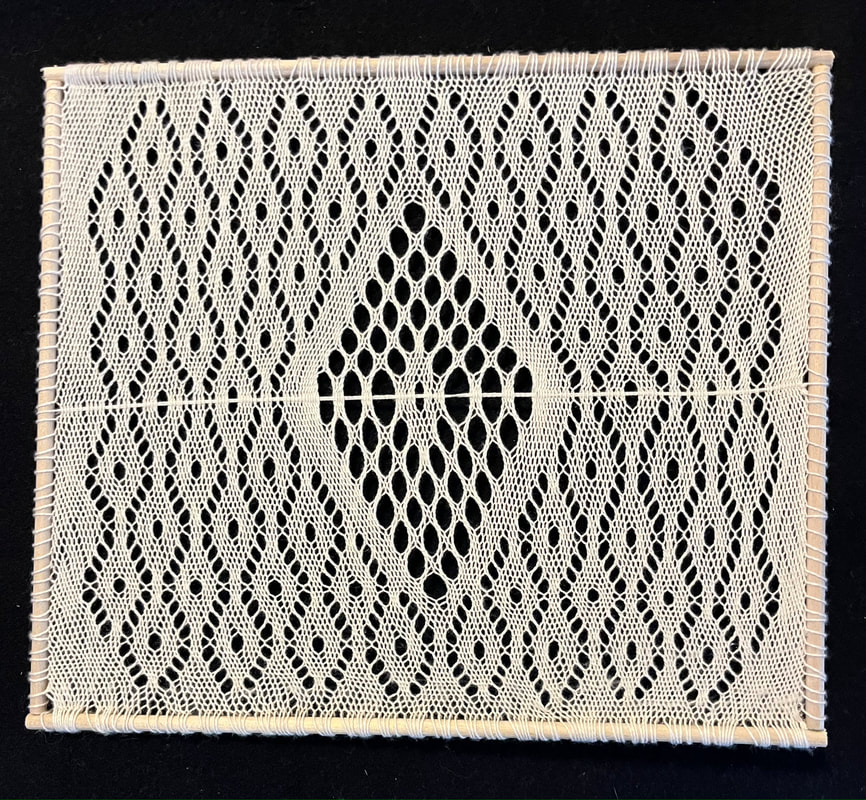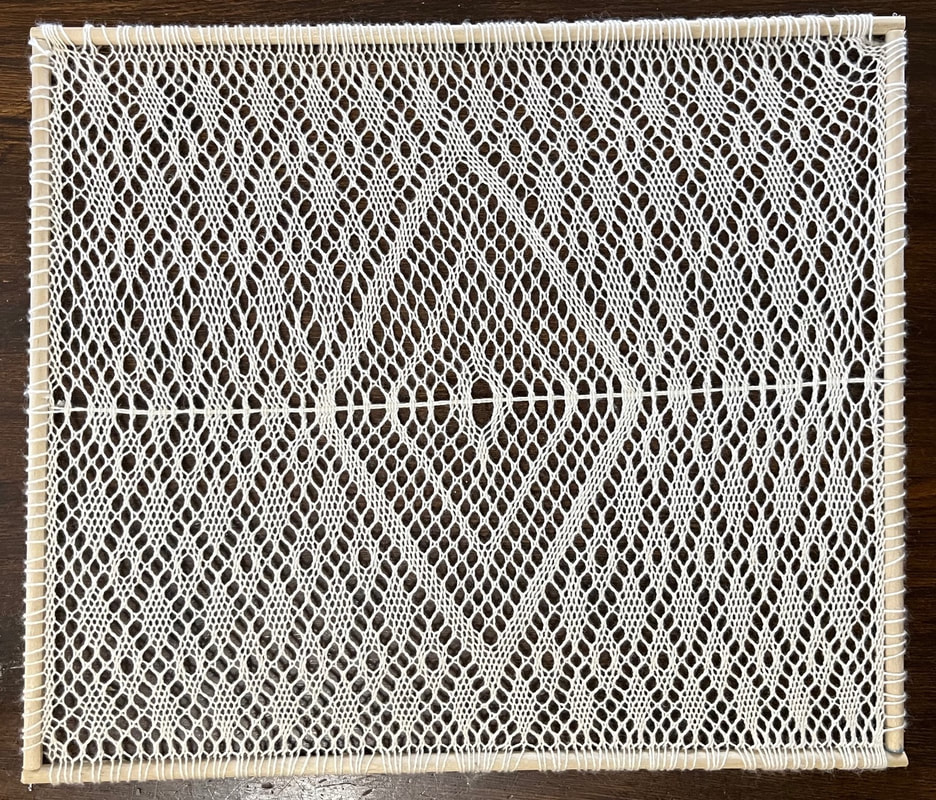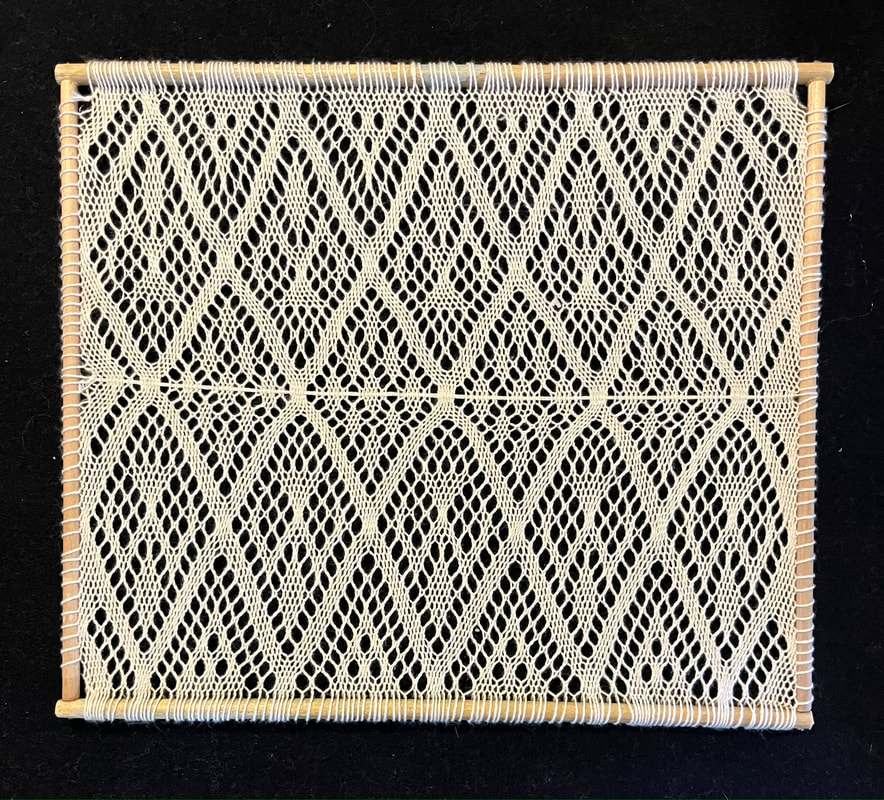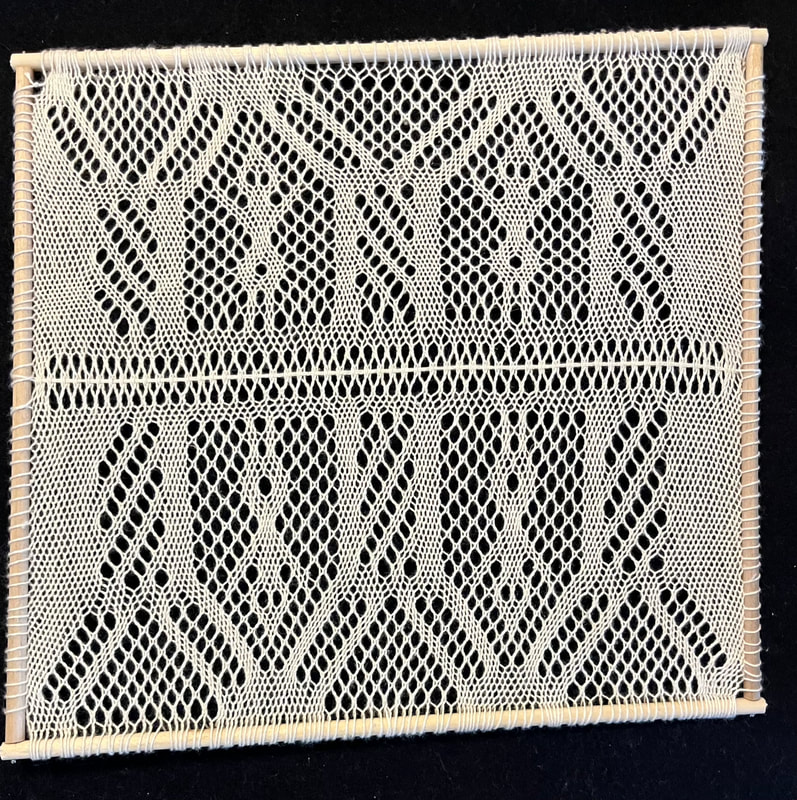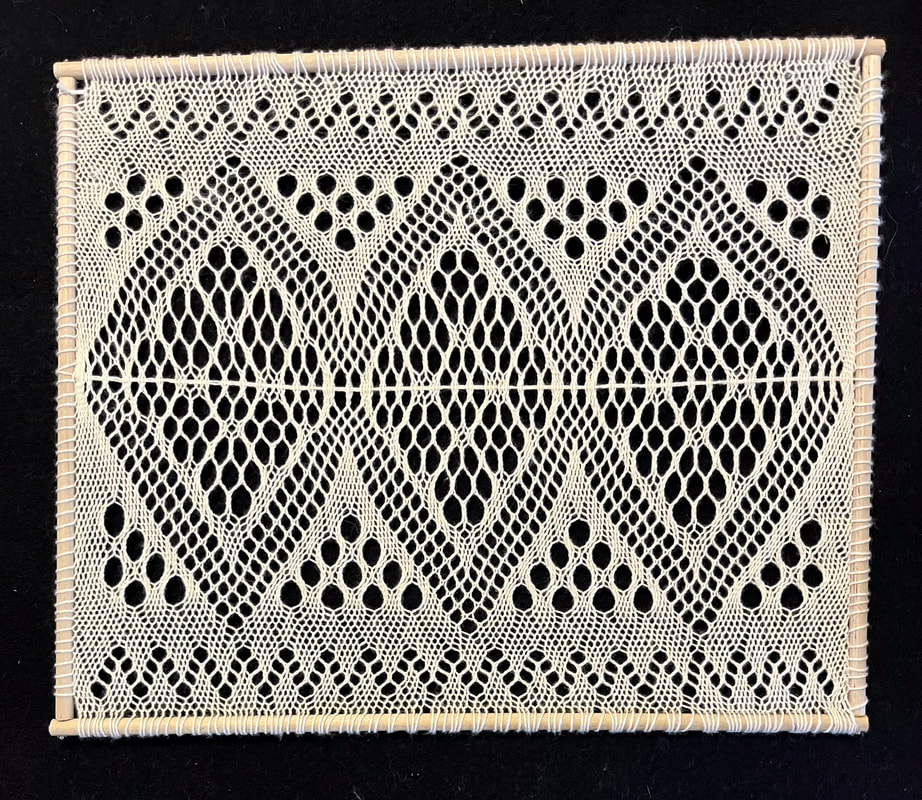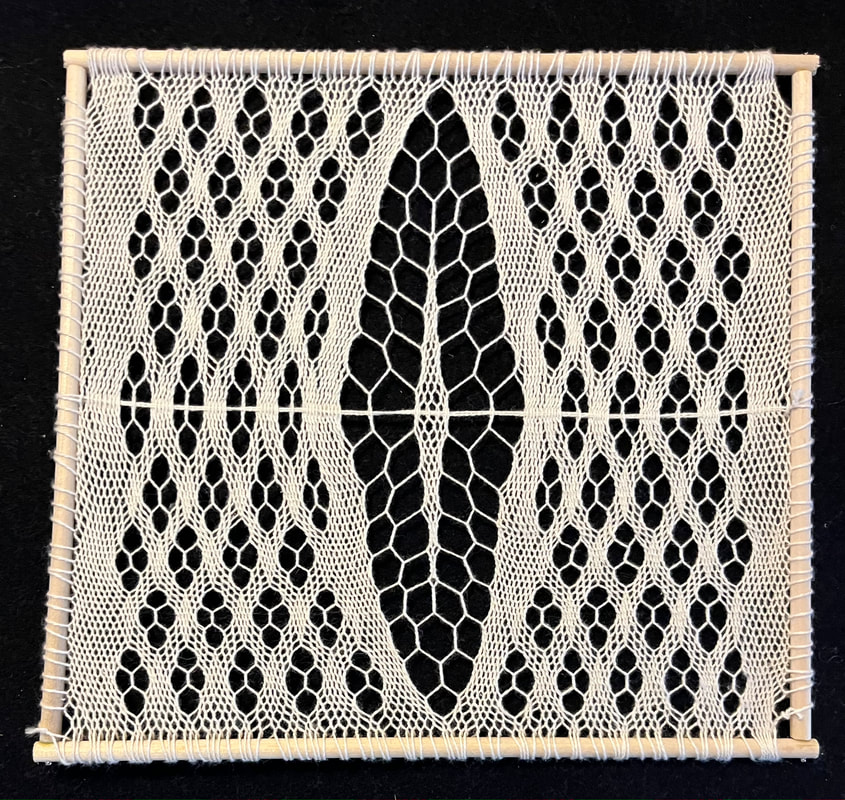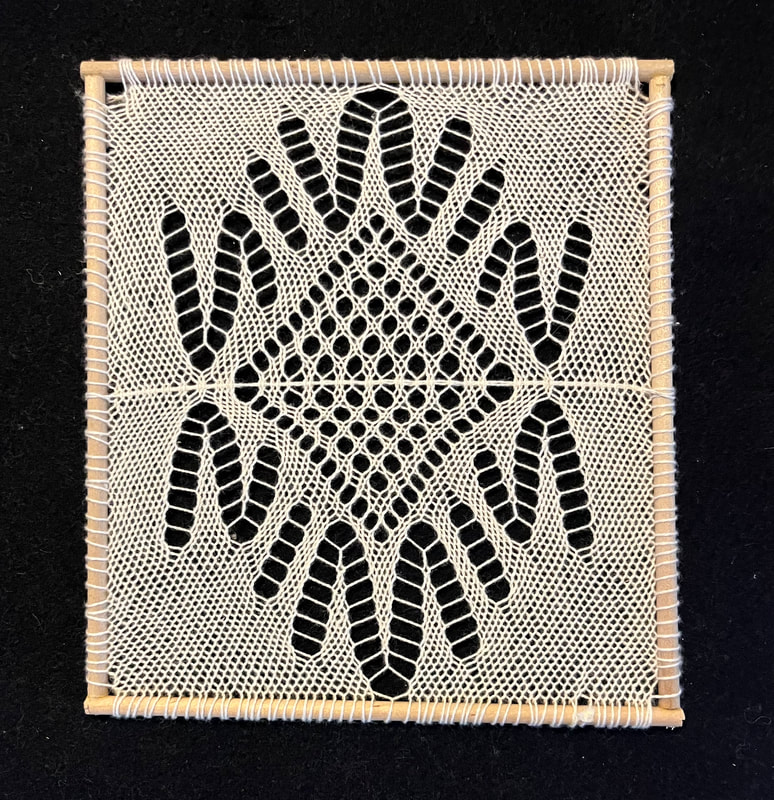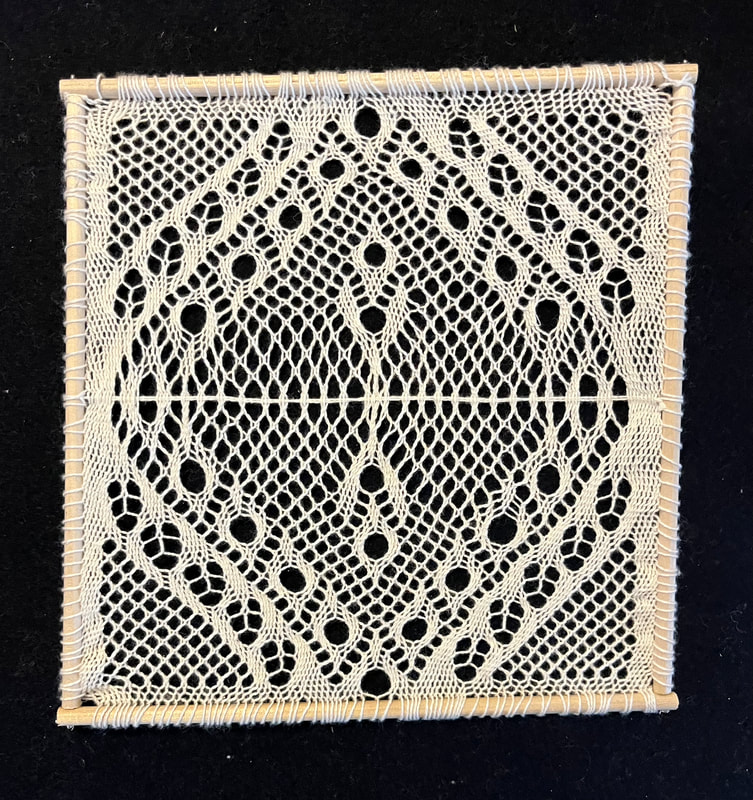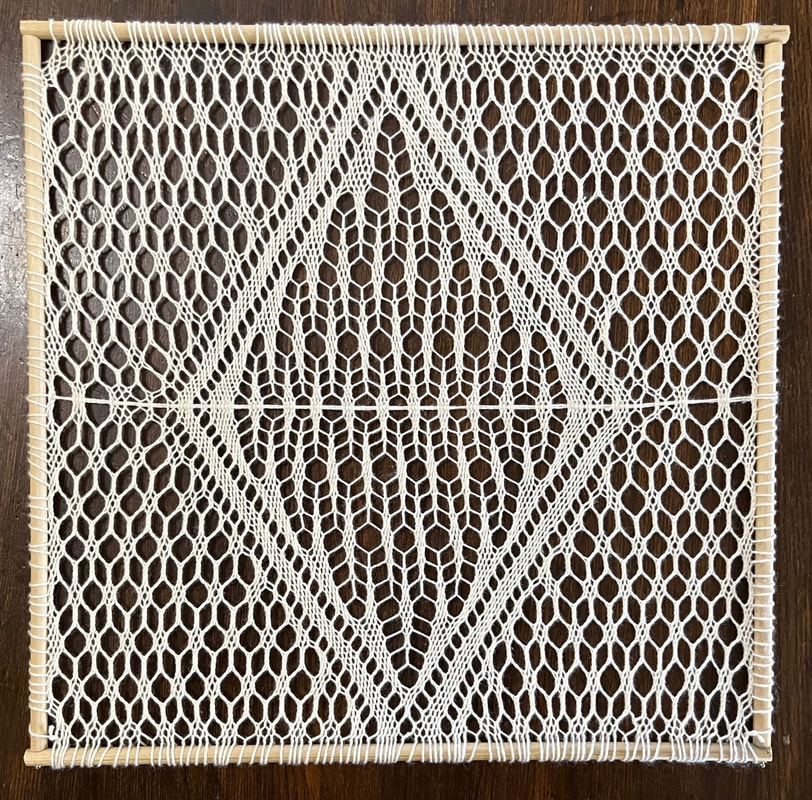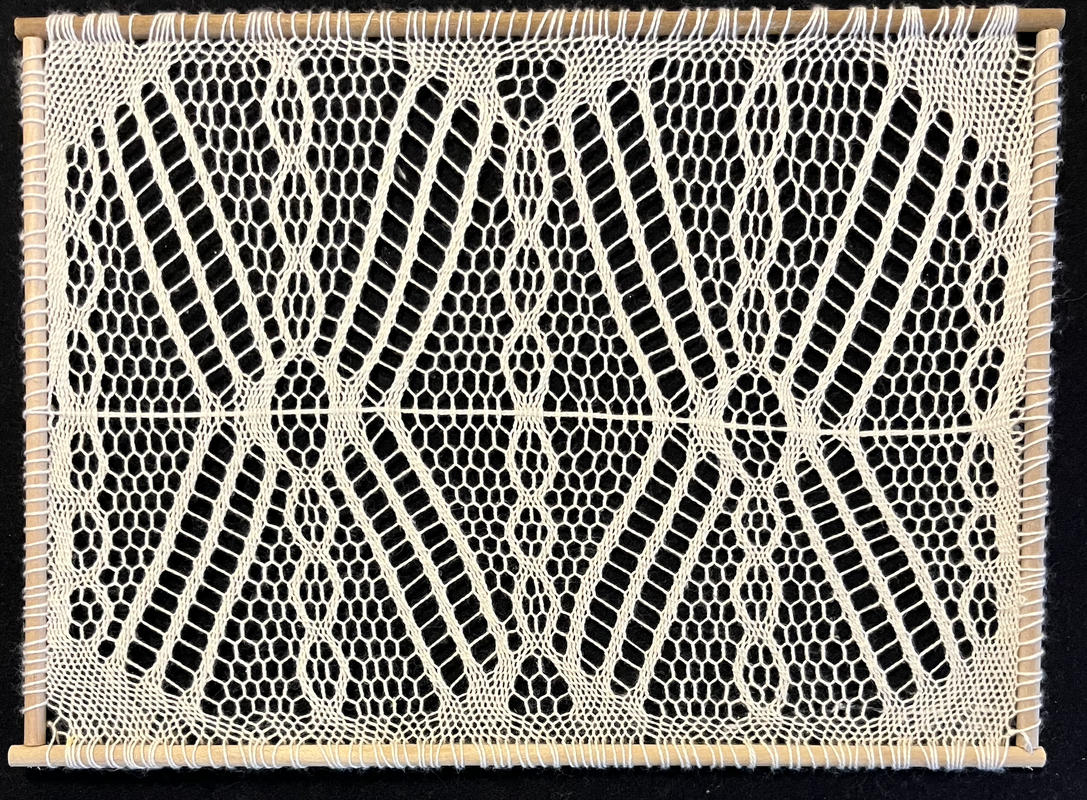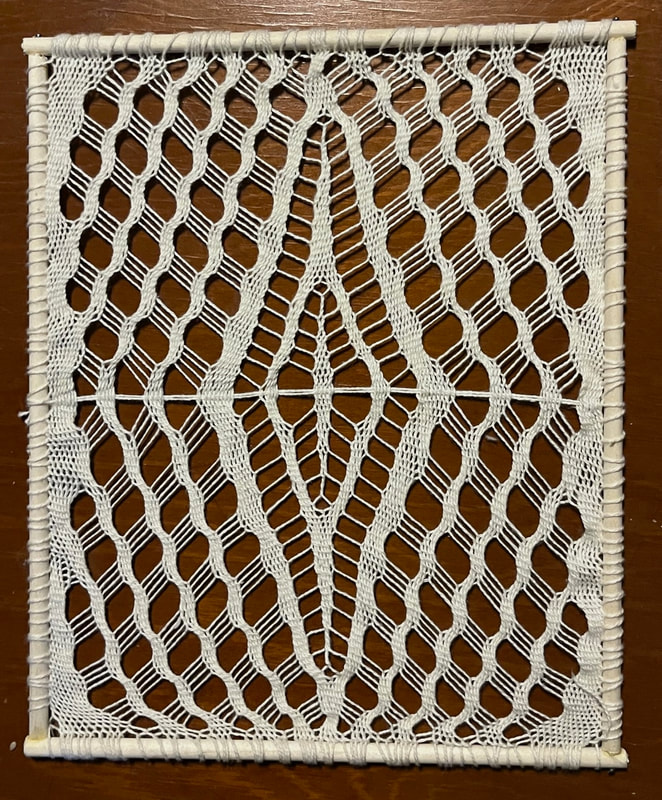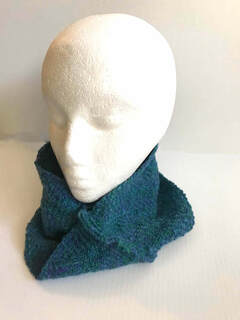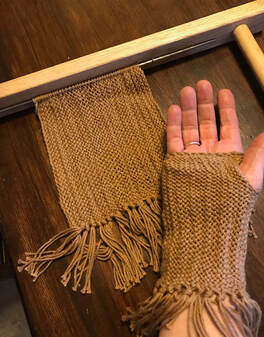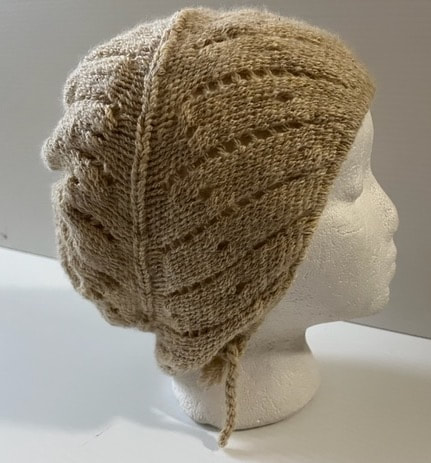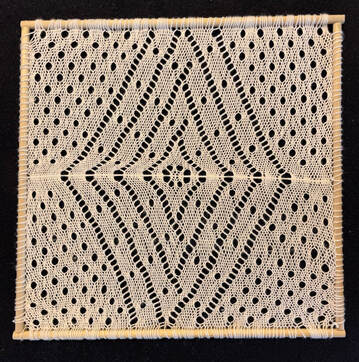Welcome to the 2022
Sprang Lace Challenge
Subscription Site!
Welcome to an ordered set of twelve sprang lace patterns.
While the goal of the 2021 Sprang Structures Subscription was to help you gain confidence with the technique, explore some of the diverse structures, and to help you begin making practical items, this year is intended as a celebration of the variety of possibilities for sprang lace. Each month you will receive a new pattern (or set of patterns). The patterns are arranged in a specific order. The first few sprang lace patterns require familiarity only with the plain interlinking stitch, right-edge stitch, and left-edge stitch. As the months progress we will explore a number of sprang lace stitches, representative of the different sprang lace stitches I have encountered over the years.
Those of you who have not participated in my classes might be surprised to see the manner in which I chart sprang structures. My lace patterns are not like those you will find in Peter Collingwood's book. Below you will find a document that discusses my notation method.
I have spent much time over the past writing out sprang lace patterns. Thinking to publish the patterns, I asked volunteers to work through the patterns to check for errors. One of the volunteers, Debbie McClelland, wanting to end up with something more than a box full of samples, began making squares to display in the windows of her house. I found the idea enchanting, and with her permission offer it to you as an option for your sprang lace.
I encourage you to begin by making a small sample of each month's pattern(s) to become familiar with the instructions. Once you have made the sample, and are comfortable with the lace motif, you might consider applying the lace-motif-of-the month to a more practical piece: a Mobius neckscarf, fingerless mittens, or a tam, using the patterns listed below. In addition to these patterns, you will also find instructions for a window square.
Scrolling down to the bottom of this page you will find several videos and instruction sheets, information that people have found helpful on a number of sprang-related topics.
While the goal of the 2021 Sprang Structures Subscription was to help you gain confidence with the technique, explore some of the diverse structures, and to help you begin making practical items, this year is intended as a celebration of the variety of possibilities for sprang lace. Each month you will receive a new pattern (or set of patterns). The patterns are arranged in a specific order. The first few sprang lace patterns require familiarity only with the plain interlinking stitch, right-edge stitch, and left-edge stitch. As the months progress we will explore a number of sprang lace stitches, representative of the different sprang lace stitches I have encountered over the years.
Those of you who have not participated in my classes might be surprised to see the manner in which I chart sprang structures. My lace patterns are not like those you will find in Peter Collingwood's book. Below you will find a document that discusses my notation method.
I have spent much time over the past writing out sprang lace patterns. Thinking to publish the patterns, I asked volunteers to work through the patterns to check for errors. One of the volunteers, Debbie McClelland, wanting to end up with something more than a box full of samples, began making squares to display in the windows of her house. I found the idea enchanting, and with her permission offer it to you as an option for your sprang lace.
I encourage you to begin by making a small sample of each month's pattern(s) to become familiar with the instructions. Once you have made the sample, and are comfortable with the lace motif, you might consider applying the lace-motif-of-the month to a more practical piece: a Mobius neckscarf, fingerless mittens, or a tam, using the patterns listed below. In addition to these patterns, you will also find instructions for a window square.
Scrolling down to the bottom of this page you will find several videos and instruction sheets, information that people have found helpful on a number of sprang-related topics.
|
Here is the list of the monthly lace patterns. New links will be activated each month.
|
Virtual meet upI look forward to sharing information with you, and accompanying you in your explorations of sprang. I will be available for a monthy sprang chat via Zoom, on the 3rd Wednesday of the month. There you are welcome to ask me questions, and receive on-line support. You will also be able to meet others who are interested in sprang.
The monthly Zoom meeting was originally intended as a question-and-answer, for those working through the patterns. What has happened is, that we start the meeting by asking if anyone has a question. Often what follows is a fascinating discussion of the current sprang structure. When silence follows, the moderator asks participants, one by one, to talk about where he/she is at, what you are working on, your challenges and successes, a bit of show-and-tell. A variety of questions, tips, and insights generally follows.
|
Just to get started here are a few projects that might inspire you
|
Make a pair of sprang mittens.
This document guides you through the creation of a swatch, calculation for the warp for the right size of mitten, as well as instructions to transform your piece of sprang into mittens. Instructions also include information for calculating and dealing with "loom waste" aka that extra length of warp that you do not turn into cloth, but which is necessary for tying the knots. |
|
Make a sprang tam.
This document helps you to make a sprang hat. It guides you through the process of making a swatch, and measuring your head for the hat. This document helps you to apply the numbers from the swatch to the head measurements, giving you starting length and number of threads (or loops) so you can make your own sprang stocking cap. |
